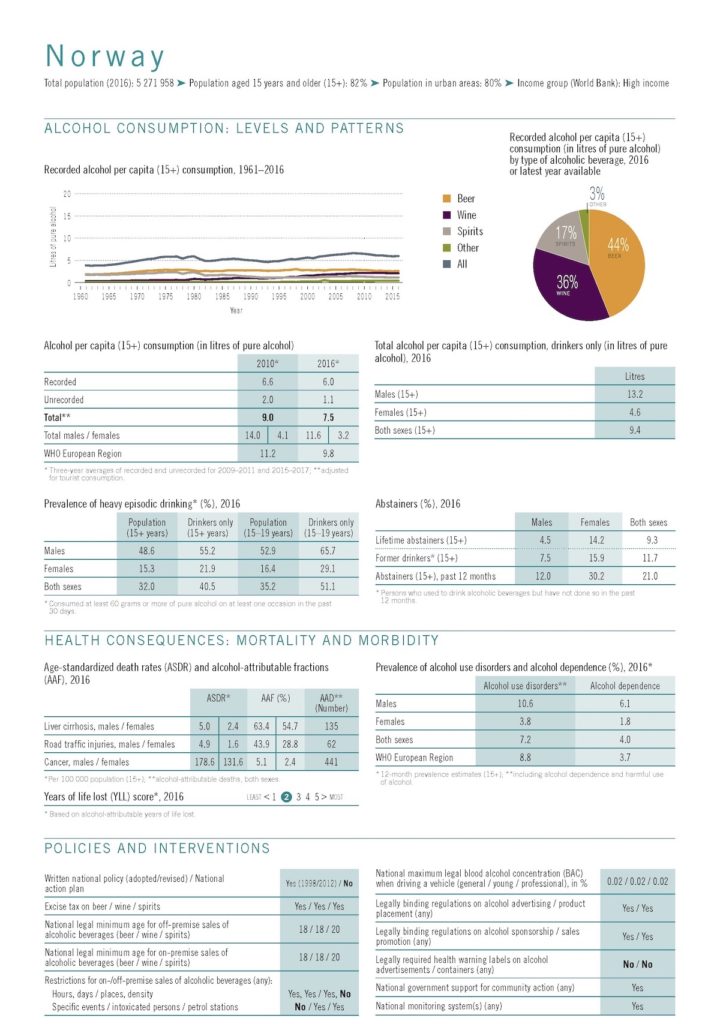Norway has adopted the World Health Organization (WHO) global goal of a 10% redcution in alcohol use into their National Alcohol Strategy.
In the new alcohol strategy the Norwegian government aims to continue with the existing and well-proven effective alcohol policy solutions in the country:
- Reduced affordability for alcohol products,
- Reduced availability through limited opening hours,
- Advertising bans, and
- Protection of the Norwegian alcohol retail monopoly “Vinmonopolet”.
In addition to these tried and tested policy solutions the strategy aims to:
- Strengthen the alcohol prevention work in the municipalities,
- Introduce measures against harm caused by alcohol products use at an early stage,
- Strengthen knowledge and competence about alcohol, and
- Implement health warning labels on alcohol products.
Alcohol use in Norway
Existing alcohol policy solutions are working in Norway. The WHO data show that per capita alcohol consumption in Norway is much lower than the average in the WHO European Region.
Data reported by Nordic Welfare show that since 2010 alcohol consumption in Norway has fallen by 8%, a promising progress. But more can be done to accelerate further reductions.
A concerning trend is visible among older people in Norway across the past 30 years. Ingeborg Rossow, senior researcher at the Norwegian Institute of Public Health (FHI) says this is a worrying trend since alcohol products do affect an older person’s already impaired balance, reaction and cognitive ability, and thus increase the risk of injury. A report by IOGT-NTO highlighted the specific harms alcohol imposes on older people.
Alcohol use in young people trends the opposite direction. More and more teens and youths are choosing to reduce their alcohol use and stay alcohol-free longer. However, as the WHO reports, among young people between 15 to 19 years of age who do consume alcohol a more than half (51.1%) engages in binge alcohol use.
Norway’s alcohol policy solutions have so far shown positive results, but there is still harm specifically among older people and youth who are already consuming alcohol. Therefore, Norway’s new Alcohol Strategy has come in to force right on time.
